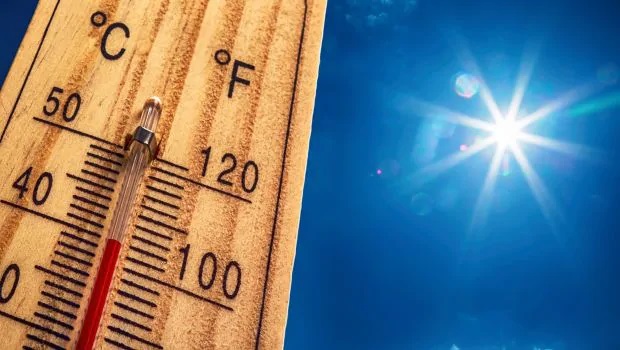Delhi Logs Third Hottest Feb Day Since 1969
Feb 21, 2023 | Pratirodh Bureau
Extreme heat events have become more intense and now last on average about 24 hours longer than 60 years ago, according to the US National Oceanic and Atmospheric Administration (Representational Image)
Source: PTI
Delhi on Monday recorded the third hottest February day since 1969 with the maximum temperature at the Safdarjung observatory, the national capital’s primary weather station, soaring to 33.6 degrees Celsius.
To put this into perspective, Delhi’s maximum temperature on Monday was nine notches above normal. The automatic weather station at Pitampura recorded a maximum temperature of 35.1 degrees Celsius, a departure of 10 degrees from normal.
The Najafgarh and Ridge stations recorded maximum temperatures of 34.6 and 34.2 degrees Celsius — 9 to 10 notches above normal. Kuldeep Srivastava, head of the India Meteorological Department’s (IMD) regional forecasting centre, said Delhi recorded an all-time high of 34.1 degrees Celsius on February 26, 2006, and a maximum temperature of 33.9 degrees on February 17, 1993.
“This is the third highest maximum temperature in Delhi in the 1969-2023 period,” another IMD official said. The national capital had logged a maximum temperature of 33.2 degrees Celsius on February 26, 2021, data available on the IMD’s website showed.
Srivastava said the lack of strong western disturbances was the primary reason for the early heat in Delhi and other parts of northwest India.
“The weather in northwest India is primarily regulated by western disturbances. Since there has been no active western disturbance in the region since January 29, the temperatures have gone up appreciably,” he said.
A few feeble western disturbances have led to below-normal precipitation in the hills, Srivastava added.
Maximum temperatures are already showing a rising trend and the mercury may soar to 40 degrees Celsius and above in one or two meteorological subdivisions of northwest India in the first half of March, the scientist said. The Met office on Sunday said isolated heatwave “conditions are likely over Kutch and Konkan during the next two days”.
Officials had said it was the earliest a heatwave alert was issued for these regions.
However, the IMD on Monday withdrew the heatwave warning for these regions due to sea breeze leading to a drop in temperatures, the officials said.
“These regions have been seeing clear skies due to the lack of strong western disturbances. The feeble western disturbances impacted only the western Himalayan region, mainly Jammu and Kashmir. Temperatures in Uttarakhand and Himachal Pradesh, too, are high due to below-normal precipitation,” said Naresh Kumar, a senior scientist at the IMD.
“We have withdrawn the heatwave warning for these regions with the temperatures showing a decreasing tendency due to sea breeze. Maximum temperatures are predicted to drop by two to three degrees Celsius in the next two-three days,” he said.
“Maximum temperatures are very likely to be in the range of 36 degrees Celsius to 38 degrees Celsius over many parts of Gujarat during the next 24 hours,” the IMD said in a statement issued at 12.45 pm on Monday.
The mercury is predicted to drop by two to three degrees Celsius in west India over the next three days and no significant change is likely over the rest of the country in the next five days, it said.
A heat wave is declared if the maximum temperature of a station reaches at least 40 degrees Celsius in the plains, at least 37 degrees in coastal areas and at least 30 degrees in hilly regions, and the departure from normal is at least 4.5 degrees.
In March last year, the warmest recorded in the country since 1901, heat caused a decline of 2.5 per cent in wheat yields.
The weather department had attributed the unusual heat to the lack of rainfall due to the absence of active western disturbances over north India and any major system over south India.
The country as a whole had logged just 8.9 mm rainfall, which was 71 per cent lower than its long period average of 30.4 mm.
